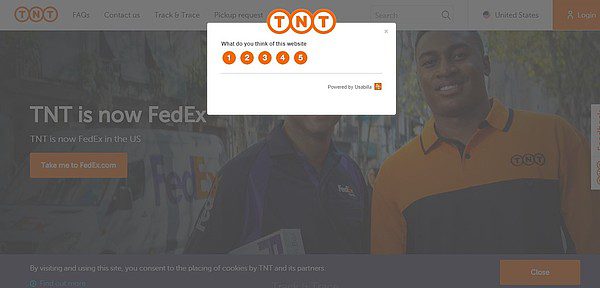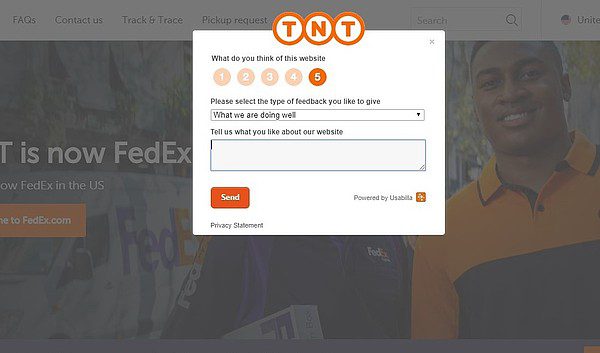Want to know how your customers and leads feel about your website, product, or overall company’s vision?
In this guide, I’d like to share three different ways in which you can get them to provide you with this valuable feedback.
Why collect customer feedback?
Let’s begin by naming the benefits of gathering customers’ feedback real quick. There are many companies spending tens of thousands of dollars on consumer research because it’s an insight into what is working well about something and what needs to be done to improve it.
The input of leads and customers helps to ensure that the end product or service will really meet their expectations, meet their needs, and help to solve their issues.
In fact, one happy customer tends to share their positive experience with 9 people, while an unhappy one will share the negative experience with 16 people.
For businesses, customer feedback:
- Improves products and services
- Helps to improve customer satisfaction and customer-centeredness
- Measures customer satisfaction
- Helps to improve customer retention
- Let’s other people know that you’re good
- Give information and data that helps with decision making
If this sounds good, let’s now move on to how you can ask customers questions and get that precious feedback.
Ways to get feedback
There are five great ways in which your online business can collect customers’ feedback:
- Surveys
- Feedback boxes
- Company review sites
- QR Codes
- Reaching out directly
Below, we’re going to discuss each of them more in depth.
Surveys
One of the quickest ways to get quality customers’ feedback is to host surveys directly on your website. No programming background or any special skills are needed because services like Survey Monkey provide options for easy creation and incorporation of custom surveys on your website.
Here’s an example of a simple on-site customer survey:

The key to collecting maximum useful data and information from customers is asking short but insightful questions and not wasting their time by making them feel like they’re doing work.
Here are easy and great tips to ensure that you gather enough data:
- Don’t let surveys interfere with the customers’ experience. According to veteran business journalist Lydia Dishman, 72 percent of customers reported surveys interfered with their experience of a website. Better make it a small pop-up box that appears at certain times; for example, these times are determined based on activity, number of pages visited, and time spent on the website.
- Keep them short. No one wants to spend a lot of time answering questions, so you shouldn’t make your surveys long. For example, ask only several critical questions but keep the overall number of questions less than 10.
- Use every question wisely. It means that every question you ask must have an important purpose behind. For example, if you want to find out how easy to use a new check out system is, ask about it, but don’t go into too many details.
Feedback boxes
These are getting increasingly popular these days because they don’t interfere with customers’ experience on the website and become active only if clicked on. Besides, they allow website visitors to provide immediate feedback and even report bugs on the site.
“Feedback boxes and live chat are the most popular customer communication options,” says Patrick Bledsoe, a customer support expert at essay company College Paper. “For example, clients looking for immediate assistance such as assignment help want to speak to a representative as quickly as possible, so they use these options.”
Here’s an example of a great feedback button placement on TNT’s website:

When you click on the button, the website offers three options for leaving feedback: specific feedback, generic feedback, and getting in touch with customer service.


To take advantage of this great option for collecting customers’ feedback, follow these tips:
- Provide several options for giving feedback. Take a look at the TNT’s feedback box once again: it has three options, which means that the visitor has a better chance to find whatever he or she is looking for.
- Don’t request information you don’t really need. For example, if you’re testing the performance of the new version of your website, that’s not a good opportunity to collect data such as gender, age, job position, industry, and stuff like that.
- Make the process of giving feedback really simple. Let me demonstrate what I mean by TNT’s example. Let’s say we clicked on “generic feedback” on the feedback box. This is what appears next.
The new box offers to rate the website using the following options: 1 (hate), 2 (dislike), 3 (neutral), 4 (like), and 5 (love). When you click on a value, a drop down menu appears with several options: Suggestion, What We Are Doing Well, Bug/Error on Website, Question, and Other.
Let’s say we select “Suggestion” option

Now, we are presented with a text box where we can type our suggestion and let the business know what we think about the website.

And we’re done! Clicking Send button ends the feedback session. Overall, the entire process lasts a few minutes, tops.
QR Codes
One of the easiest ways to get feedback directly from users about the product or services in the real world is by leveraging QR Codes. Thanks to the pandemic, the two-decade-old technology QR Codes are back to the mainstream.
Following the success of QR Codes as menus at restaurants, businesses are now using them in other interesting ways. Collecting feedback in the physical world is one of them. Create a QR Code for the survey and paste them on your product, posters, or store windows.

When the users scan the QR Code, they are redirected to a set of questions. An enhancement of QR Codes is dynamic QR Codes, which allow you to change questions or the form altogether without changing or reprinting the QR Code.
Reaching out directly
There are many ways in which you can gather information from the target audience directly. For example, many businesses use emails; here’s an example email sent out by a popular online service Thumbtack:
Organizing meetings and events is also a good option if you have a considerable number of local customers. You can even automate the process of sending emails using client feedback software.
What you shouldn’t ask about
While implementing these customer feedback collection tools, keep in mind that you shouldn’t ask the following:
- Ask what, not why. The “why” implies that the customer will have to spend more time to provide the qualitative information about their experience. If you do ask the “why,” be careful, says Dishman, because 52 percent of customers don’t want to spend more than three minutes filling out a survey.
- Irrelevant questions. When designing a survey/feedback box/direct email, make sure that you’re not asking anything extra. An overwhelming number of questions is one of the most important factors that prompt people to drop surveys.
- Personal data. Don’t ask for details like gender, location, age, and occupation if absolutely needed.
Practical feedback questions
Since asking the right questions can be difficult, here are some options for you to check out. They focus on customer experience, website improvement, and marketing considerations.
- What did you want to find on our website?
- Did we meet your expectations? Why?
- Did you find the information on our website (or specific page) useful?
- Is our pricing clear?
- How do you think we can improve our website (specific page)?
- How likely are you to recommend our product/service to a friend or a colleague?
- How did you hear about us?
- If you weren’t satisfied with our services, what can we do to get you to come back?
- What company can we learn from?
- Is there anything holding you back from making a purchase right now?
Conclusion
Collecting customers’ feedback is a critical piece in the conversion research puzzle. Keep in mind that the tone of your communication with customers should be conversational because it’s much more to engage them.
To make sure you’re doing everything right, try to experiment with different ways of collecting feedback and different question types. See what works best and use the feedback to enhance your business!
Get feedback with our Nicereply integration
Get immediate feedback after every live chat session with our Nicereply integration. Alternatively, place a feedback widget into your email signature and learn from customer ratings.
Share this article
How to ask your customers questions to get feedback
Collecting customers’ feedback is a critical piece in the conversion research puzzle. Read how to ask your customers questions to get feedback.
How to Create Feedback and Suggestions Board
Using customer suggestions & feedback board, businesses can build customer-centric products that better service them and solve their problems.
How to conduct a customer survey
Collecting data through customer surveys and analyzing the data brings important insights to you. Learn how to create one.
How great customer service helps repeat orders (plus 5 best strategies)
Take your customer service from good to great with our 5 strategies for repeat orders and watch your business grow rapidly.

 Български
Български  Čeština
Čeština  Dansk
Dansk  Deutsch
Deutsch  Eesti
Eesti  Español
Español  Français
Français  Ελληνικα
Ελληνικα  Hrvatski
Hrvatski  Italiano
Italiano  Latviešu
Latviešu  Lietuviškai
Lietuviškai  Magyar
Magyar  Nederlands
Nederlands  Norsk bokmål
Norsk bokmål  Polski
Polski  Română
Română  Русский
Русский  Slovenčina
Slovenčina  Slovenščina
Slovenščina  简体中文
简体中文  Tagalog
Tagalog  Tiếng Việt
Tiếng Việt  العربية
العربية  Português
Português 








